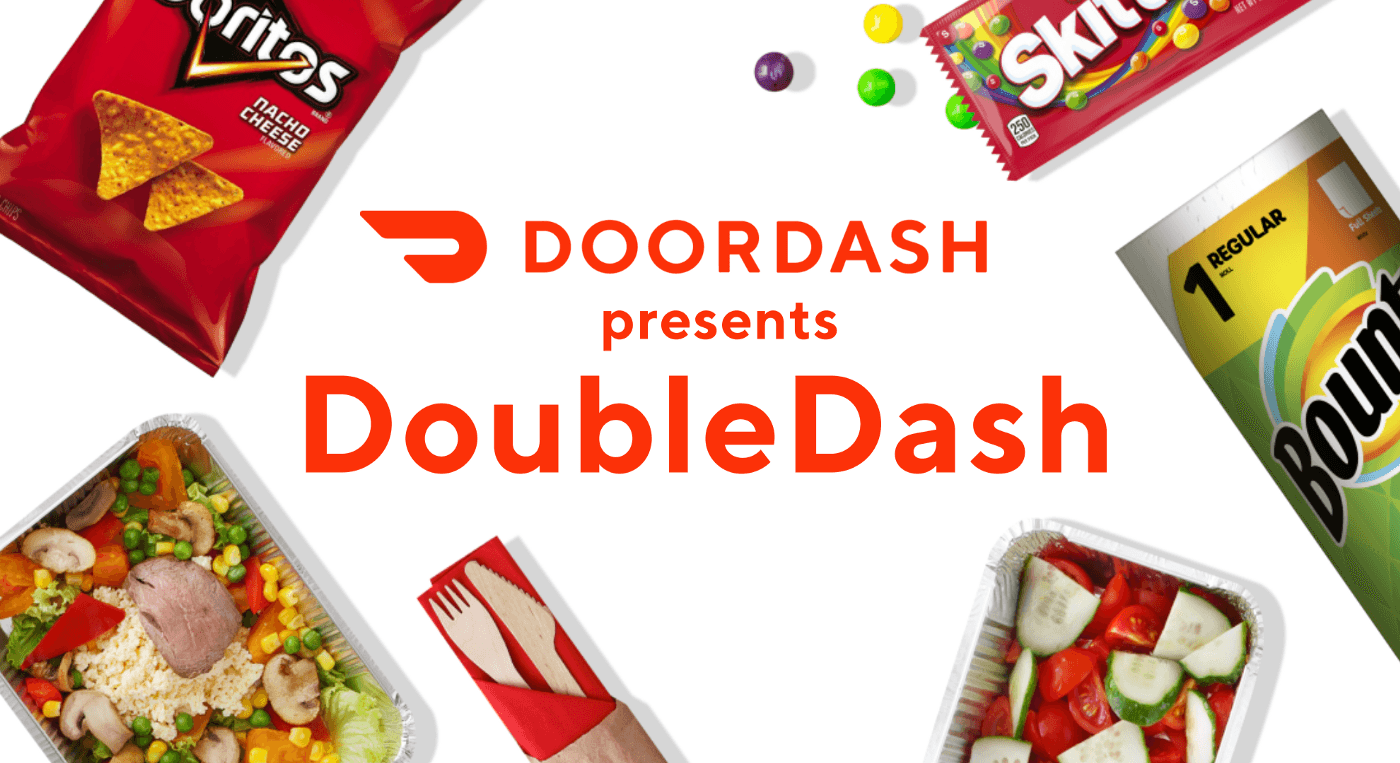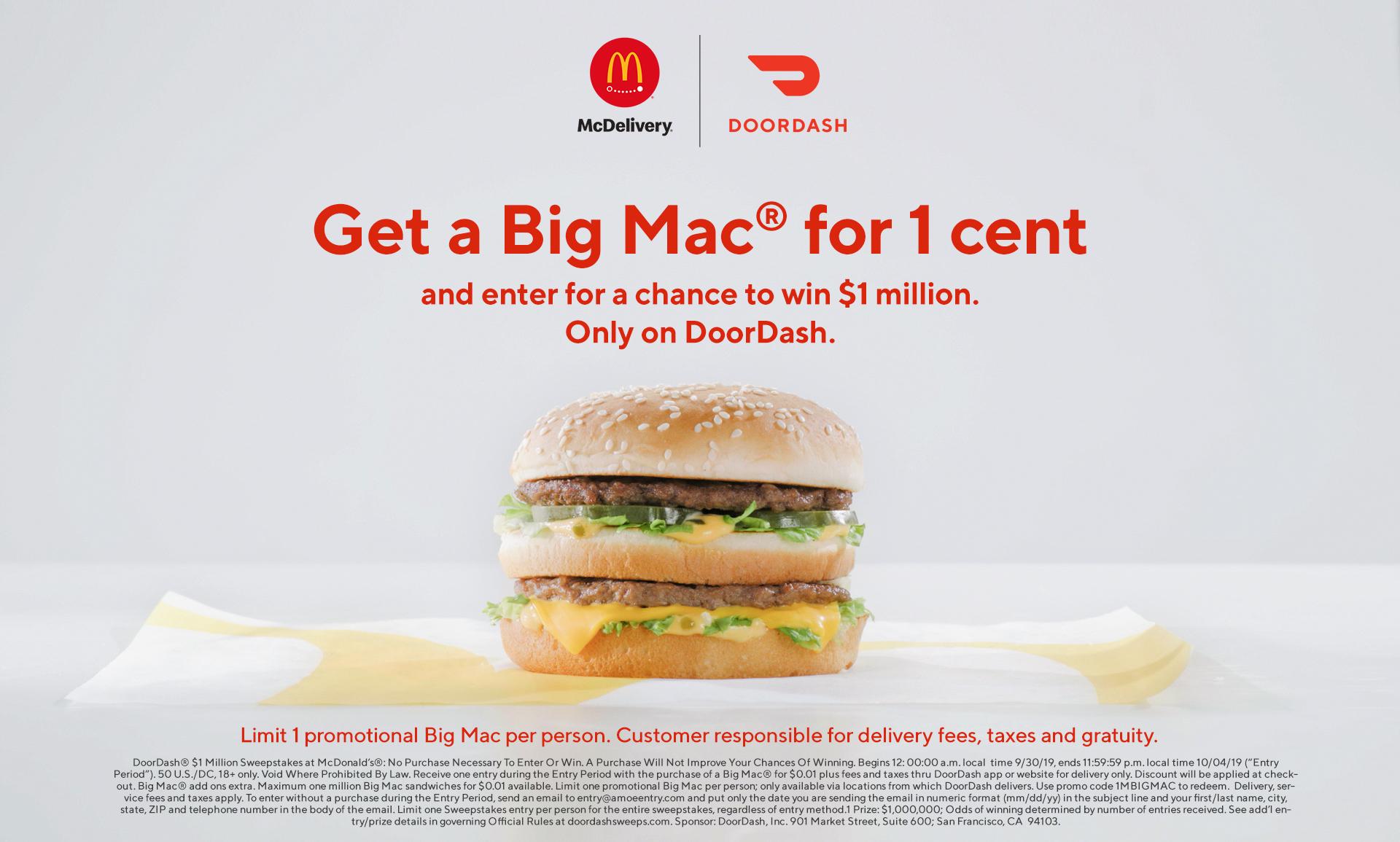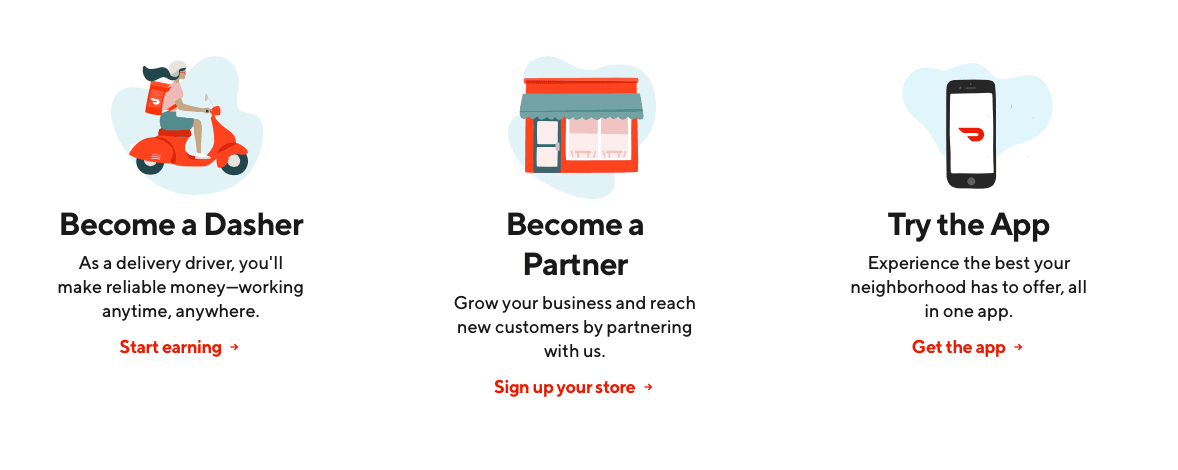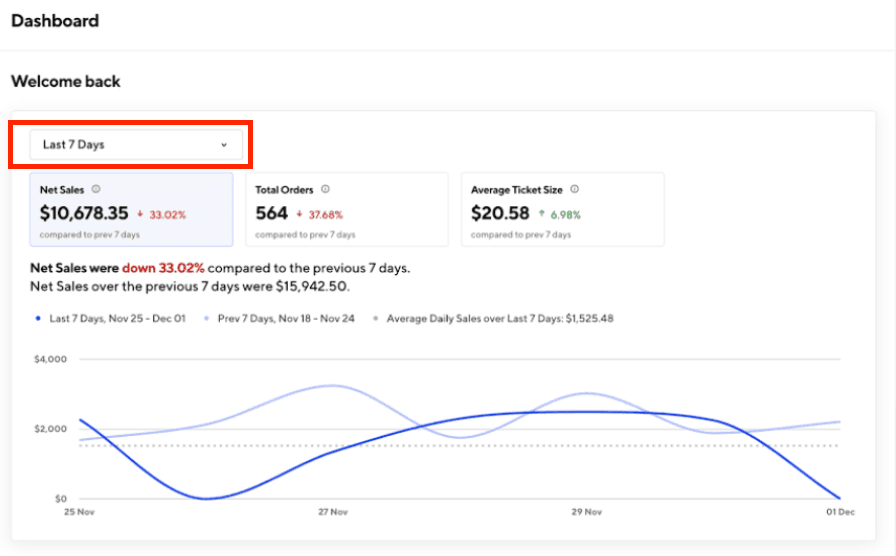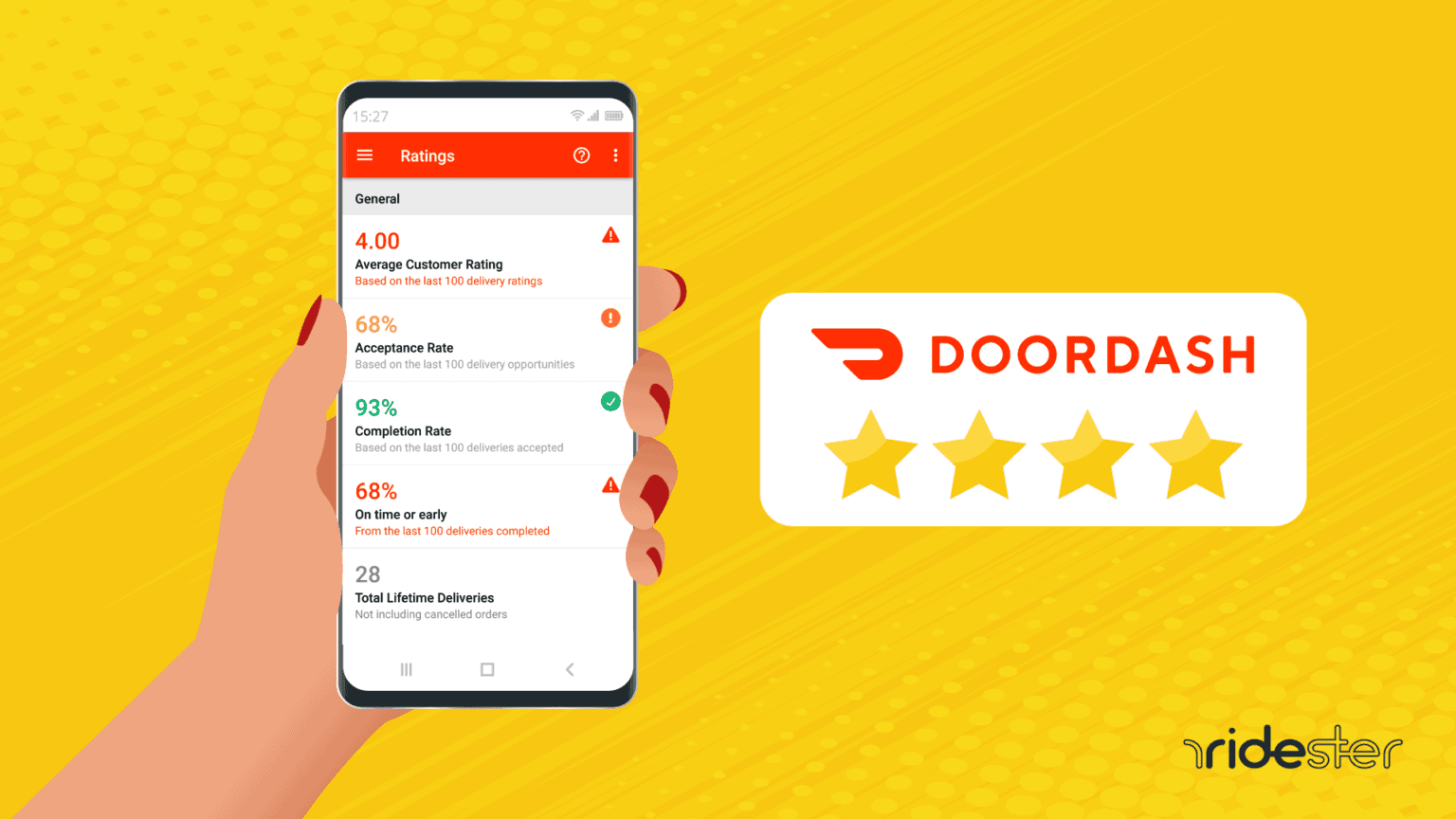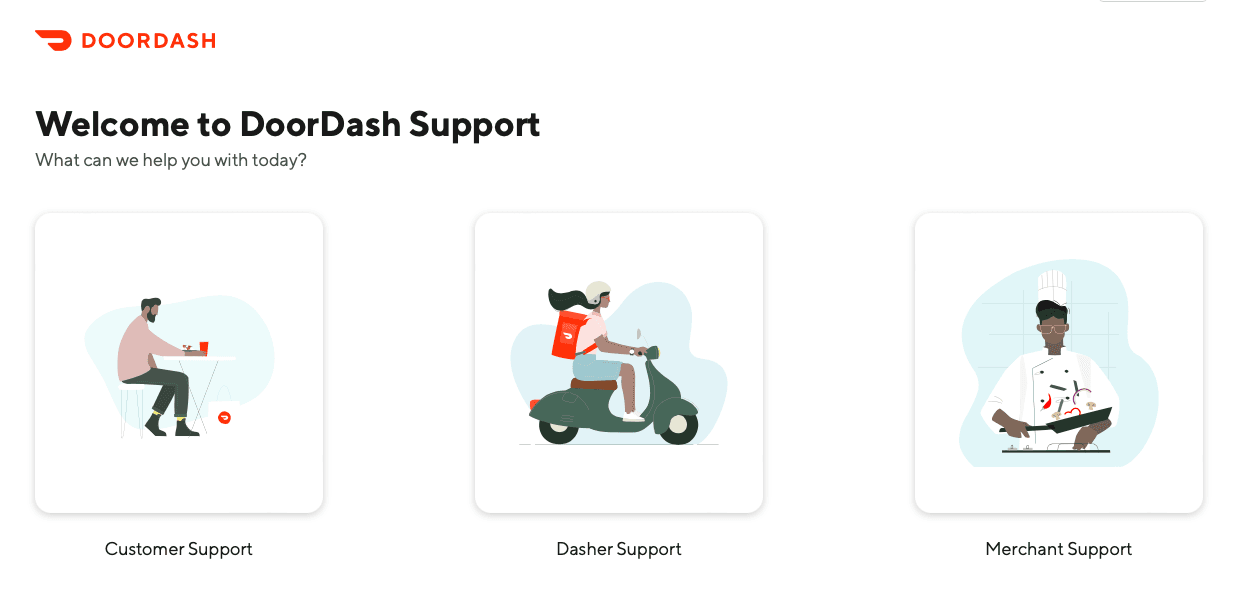DoorDash wasn’t the first food delivery service, but it soon became the best. DoorDash’s marketing strategy quickly turned four college students’ dreams into a $28.66 billion reality.
Within this DoorDash marketing strategy case study, you’ll get to see how it all started, and how much has evolved. In the end, you’ll walk away with six actionable steps to driving business growth and making your dreams come true.
DoorDash was created by four Stanford students in 2012. The students, Tony Zu, Stanley Tang, Andy Fang, and Evan Moore, wanted to create an “on-demand FedEx” for food delivery.
They saw a need in local restaurants that didn’t have delivery services and wanted to help them expand their reach. They started interviewing local businesses to gain customer information and started testing ideas for a mobile app.
DoorDash originally entered the market with the website PaloAltoDelivery.com. It wasn’t until after they received an investment of $120,000 from Y Combinator that they officially became DoorDash.
Evan Moore left after 17 months, but his work definitely helped turn DoorDash into what it is today. In the beginning, he helped interview business owners and was even one of the first “Dashers”, or delivery drivers.
In 2016, DoorDash started experimenting with alcohol delivery. It was also at this point when they started developing and experimenting with AI or robot delivery.
DoorDash wanted to expand their services even more, and in 2018, they began collaborating with Walmart. Their hope was to get into the grocery delivery market, which paid off in March 2020, when the pandemic began.
In fact, DoorDash was responsible for 45% of all food delivery orders in 2020. Today, by sticking true to their mission while evolving their marketing strategy, DoorDash has continued to grow.
Product
DoorDash began as a food delivery service so customers could receive orders from local restaurants, without having to leave their homes. While that’s still a major factor of their product line, it has since evolved to include other items.
DoorDash introduced DoubleDash in 2021, which allows users to shop across multiple establishments, like grocery, convenience, and liquor stores. Consumers can have Dashers pick up items from multiple locations for no extra charge.
By expanding their services, they were able to enter new markets and boost revenue. This strategy is integral to the growth of the company.
Price
DoorDash’s Four Main Streams of Revenue
- Advertisements On App
- DashPass Subscriptions
- Delivery Charges
- Restaurant Commissions
Let’s dive deeper into how these channels break down. Restaurants are able to advertise on the DoorDash mobile app, which places the brands’ names right in front of customers.
The DashPass subscription costs $9.99 a month and gives customers $0 delivery fees on any delivery over $12. Without a subscription, customers pay a delivery charge on each order, which ranges from $5 to $8.
Of course, that cost varies depending on the distance dashers must travel and the demand for the service at that time.
Finally, DoorDash receives a commission from the restaurants they pair up with. The commission equals out to about 20% of each order.
Though that may seem a little high, the service allows restaurants to reach customers they may never have before.
Place
DoorDash started its operations at a local macaroon store in downtown Palo Alto, California. The business quickly expanded throughout all 50 states in the United States, and later expanded into Canada, Japan, and Australia.
Recently, DoorDash has expanded into Europe, bringing the service to Germany, with talks of it growing into Denmark and Sweden. This expansion comes from a recent $8 billion agreement to buy Finland-based food delivery service, Wolt.
Business expansion was necessary for DoorDash to stay competitive in a saturated market. One can only assume DoorDash’s marketing strategy will continue to allocate resources toward growth and expansion.
Promotion
DoorDash is a widely popular company, so a portion of their promotion comes from word-of-mouth marketing. The better the service becomes, the more likely consumers will talk positively about their experiences.
DoorDash also allocates money towards traditional advertising efforts. They use television, online, and print advertising to promote the benefits their services bring to users.
Finally, DoorDash pairs up with restaurants to create deals that will excite consumers. The example below illustrates how McDonald’s paired with DoorDash to bring customers to both businesses.
Segmentation
DoorDash Targets Three Main Groups:
- Dashers
- Restaurants
- Users
Dashers are what the DoorDash delivery drivers are called. The company targets people who want to choose where, and when, they work, along with how much they earn.
If someone has a way of transportation and a smartphone, they can be a Dasher. Next, DoorDash targets restaurants that don’t have their own delivery services and want to expand their reach.
Finally, DoorDash targets users who don’t have the time to cook for themselves because of their busy schedules. They want to reach users who want high-quality food, conveniently delivered to their homes.
Find Your Target Audience
The first step to copying DoorDash’s marketing strategy is determining to who you want to market your product. You need to identify who is most likely to buy from you, or, your target audience.
Identifying your target audience will allow you to understand what content to make for them based on their interests.
You should ask yourself questions like:
- Who is my target audience?
- What are their issues?
- What content do they like?
- Where are they?
By asking yourself those questions, you can determine what kind of content your audience will be attracted to. You can also determine where and when to display your content so that your audience will see it.
If you want to expand this even more, see if you can target different audiences based on their needs. Just like DoorDash, determine what you can offer multiple parties so that every partnership is mutually beneficial.
Discovering Market Gaps
DoorDash wasn’t the first company to offer a food delivery service, so it had to find new ways to penetrate the market. With competitors focusing on cities, DoorDast decided to focus on delivering to American suburbia.
DoorDash focused on the areas with less competition in order to break into the market. Additionally, they recognized other meal delivery services didn’t share data on consumer habits.
DoorDash decided to allow restaurants to gather analytics about their consumers. These analytics give restaurant owners feedback on how to improve customer experience to increase sales.
Determine Market Gaps
Finding out where the market gaps were, was necessary for DoorDash to break through successfully. Similarly, if you’re having trouble overcoming your competitors, find gaps within your own market.
How to find market gaps:
- Listen to customer feedback
- Monitor trends
- Determine where your competitors fall flat
- Adjust an aspect of an existing product
- Discover a new niche
Finding gaps in your market allows you to succeed where your competitors aren’t. Showcase what makes your business stand out, and frequently analyze results to come up with more ideas.
Emphasis On Quality
Speaking of finding market gaps, DoorDash had to determine which aspect of food delivery to focus on.
Uber Eats focused on speed, while Seamless focused on having the best prices. DoorDash decided to put an emphasis on the quality of delivery.
They do this by making sure the restaurants and the Dashers have top ratings before they team up with them. This ensures the customers will receive quality food, safely.
Discover Your Unique Value Proposition
Early on in its endeavors, DoorDash’s marketing strategy focused on what made them different from their competitors. You can do that too by finding your product’s unique value proposition.
This core benefit differentiates your product or service from the competition. If done correctly, it showcases your product as the best possible option on the market.
How to find your unique value proposition:
- Identify your audience
- Research competitors
- Label your strengths
- Determine your weaknesses
Put yourself in your customers’ shoes to determine what they really want. Then, you can discover the reason they purchase your product over competitors’ products.
Improving Technology
DoorDash has mobile apps for both Android and IOS. They make sure the app is easy to use and even have features that show how much they recognize consumer habits.
For example, the DoorDash app produces a “suggestion list” based on what they previously ordered. You can also schedule delivery for later and track where your order is live.
They are constantly trying to upgrade their mobile app and other technological aspects of their service to improve customer experience. The better the customer experience is, the more likely consumers are to make purchases.
Ensuring your technology is up to date and efficient makes it easier for customers to make purchases. In fact, 76% of shoppers won’t go back to a website if they have a poor first experience.
That means you could be losing a majority of sales due to:
- Long load times
- Poor usability
- Low-quality product images
You can drive customers down the sales funnel easier if you follow digital trends and improve customer experience.
Customer-Centric Approach:
DoorDash has taken a customer-centric business approach. They know that their revenue comes from happy customers, so they want to make sure they have positive experiences.
DoorDash has a strong social media presence, especially on Twitter, where they have a separate account for their customer support.
In addition to reaching out to issues on social media, DoorDash has 24/7 customer support available on their website for users to access. This ensures users will be able to remedy their issue, should they have one, quickly and easily.
DoorDash’s marketing strategy emphasizes the importance of making sure all participating parties are happy. You can do the same by improving the customer experience in your business.
Tips on how to improve customer experience:
- Analyze your consumer habits
- Foster an emotional connection
- Personalize their experience
- Listen to feedback
- Analyze customer pain points
- Streamline the buying process
Customers are more likely to return to your business and make another purchase if they have a pleasant experience. In fact, 44% of consumers become repeat buyers if their experience was personalized.
Customer experience also affects how your brand is perceived by the public eye. If customers have positive experiences, your brand will be placed in a positive light.
Adapting To World Events
Covid-19 brought destruction to many restaurants throughout the world. So how did DoorDash not only stay afloat but actually grow during this time?
DoorDash emphasized both employee and customer safety during the pandemic by offering gloves and hand sanitizer to all Dashers. They also began offering contact-free deliveries to limit face-to-face interactions.
If a Dasher did get infected, DoorDash offered them 2-week’s pay while they rested and quarantined.
To support local restaurants and continue their own growth, DoorDash offered a limited-time offer. For a 30-day time period after signing up, independent restaurants didn’t have to pay commission fees.
These efforts not only made customers and Dashers safer, but it helped local restaurants stay in business.
Adjust Your Strategy
DoorDash’s marketing strategy had to adapt greatly in order to handle Covid-19, and it paid off. Changing your strategy to keep up with major world events can make your brand seem responsible and knowledgeable.
Tips on adjusting your strategy:
- Keep up with the news
- Look at how other businesses are handling major events
- Gear your strategy to changing needs
- Alter the price or packaging of products
- Be respectful
You should be careful when changing your strategy for major events. Once your content gets put out into the world, you have little control over how the public perceives it.
Remember, if your changes aren’t getting the results you wanted, go back to the drawing board and try again. Analyze your results and tweak your strategy until your work pays off.
This DoorDash marketing strategy case study can only give a little bit of insight into how to thrive in a competitive market. If you really want to succeed, take a look at your company and determine:
- What makes it different?
- Why do customers buy?
- How can you improve?
Following these steps can help you penetrate a saturated market, connect with your audience, and drive business growth.


